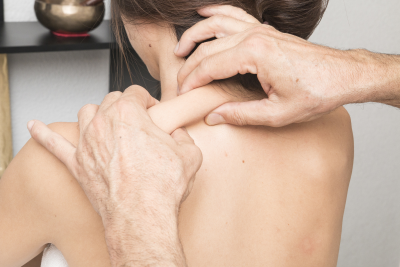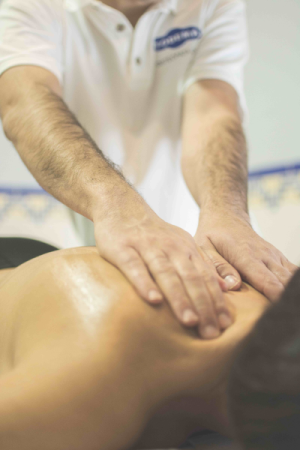Lymphatic Drainage or Manual Lymphatic Drainage (DLM) with Vodder Method
 Manual lymphatic drainage (DLM) is a set of manual techniques used to facilitate the flow of excess fluids that the lymph collects and purifies as it passes through the lymph nodes before returning to the blood. The massage promotes the passage of all residues present in the tissues within the lymphatic capillaries. It eliminates the stagnation of lymphatic circulation, stimulates the release of immune cells from the lymph nodes (which, passing into the blood, increase the body's defense capacity against infections of any kind).
Manual lymphatic drainage (DLM) is a set of manual techniques used to facilitate the flow of excess fluids that the lymph collects and purifies as it passes through the lymph nodes before returning to the blood. The massage promotes the passage of all residues present in the tissues within the lymphatic capillaries. It eliminates the stagnation of lymphatic circulation, stimulates the release of immune cells from the lymph nodes (which, passing into the blood, increase the body's defense capacity against infections of any kind).
Lymphatic drainage is mainly used in the treatment of lymphedema.
Manual lymphatic drainage is also associated with other rehabilitative therapies, as well as for preventing and/or treating edema resulting from trauma or surgical interventions:- Edema
- Lymphedema
- Sinusitis, pharyngitis, tonsillitis
- Coxarthrosis
- Shoulder impingement syndrome
- Pregnancy, lower limb edema, breastfeeding
- Thrombophlebitis
- Ulcers
- Dermatological diseases
 Effects and Benefits?
Effects and Benefits?
After the first lymphatic drainage session, patients experience immediate benefits. By reducing the typical swelling of edema, a sense of lightness is felt. Due to the drainage effect, patients may feel the urge to urinate.One of the effects of drainage - and the most evident benefit - is the anti-edematous effect. We can say that lymph has the ability to intervene in the elimination of widespread serum edema that the blood cannot completely eliminate and that the lymph itself, under normal conditions, is unable to absorb. The method used is Vodder.
Contrary to what one might think, lymphatic drainage is a technique that is difficult to perform. The operator must have a perfect understanding of the lymphatic circulation and the areas to be treated. Only in this way can the drainage of interstitial fluids and lymph be facilitated by the right manipulations. The goal is to direct the lymph towards the lymphatic areas closest to the massaged area. In this way, the superficial circulation of lymph and its flow are facilitated.Contraindications
There are contraindications for manual lymphatic massage: individuals with acute infections, eczema, skin blemishes, untreated malignant tumors, heart failure, kidney failure, hyperthyroidism, bronchial asthma, acute asthmatic bronchitis, phlebitis, thrombophlebitis, and hypotension should not undergo lymphatic drainage.
'The manual action of lymphatic drainage (especially the Manual Lymphatic Drainage technique according to Vodder), performed through slow and rhythmic movements, pushes the lymph into the lymphatic stations, thus avoiding the stagnation of liquids and toxins in the tissues. This technique, which is extremely relaxing, also serves another extremely important purpose, which concerns the renewal of intercellular or interstitial fluid. The continuous supply of "fresh" lymph is essential because better-nourished cells can renew themselves and live longer. In this way, tissue repair is facilitated in cases of wounds or irritative processes, and consequently, aesthetic appearance is also improved."
Due to its multiple effects, manual lymphatic drainage is used in the scientific treatment of the lymphatic system for resolving edema in post-operative courses, in cases of venous insufficiency, in the treatment of cellulite, and in various lymphedematous pathologies, post-traumatic conditions, during pregnancy, etc.'
Source: https://www.lifegate.it/tutto-sul-linfodrenaggio
Learn more about Tui-Na massage Learn more about Gianluigi Flauret's method Learn more about Thai massage


